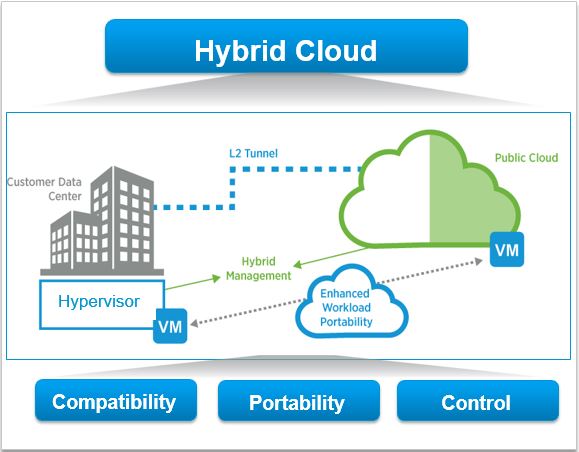I work for a global channel partner of Microsoft, VMware & AWS and one of the teammates recently asked me the question whether VMware Cloud on Azure (similar solution to VMware Cloud on AWS) would be a reality? It turned out that this was on the back of a statement from VMware CEO Pat where he supposedly mentioned “We have interest from our customers to expand our relationships with Google, Microsoft and others” & “We have announced some incremental expansions of those agreements“, which seems to have been represented in a CNBC article as that VMware cloud is coming to Azure (Insinuating the reality of vSphere on Azure bare metal servers).
I’d sent my response back to the teammate outlining what I think of it and the reasoning for my thought process but I thought it would be good to get the thoughts of the wider community also as its a very relevant question for many, especially if you work in the channel, work for the said vendors or if you are a customer currently using the said technologies or planning on to moving to VMware Cloud on AWS.
Some context first,
I’ve been following the whole VMWare Cloud on Azure discussion since it first broke out last year and ever since VMware Cloud on AWS (VMWonAWS) was announced, there were some noise from Microsoft, specifically Corey Sanders (Corporate vice president of Azure) about their own plans to build a VMWonAWS like solution inside Azure data centers. Initially it looked like it was just a publicity stunt from MSFT to steal the thunder from AWS during the announcement of VMConAWS but later on, details emerged that, unlike VMWonAWS, this was not a jointly engineered solution between VMware & Microsoft, but a standalone vSphere solution running on FlexPod (NetApp storage and Cisco UCS servers) managed by a VMware vCAN partner who happened to host their solution in the same Azure DC, with L3 connectivity to Azure Resource Manager. Unlike VMWonAWS, there were no back door connectivity to the core Azure services, but only public API integration via internet. It was also not supposed to run vSphere on native Azure bare metal servers unlike how it is when it comes to VMWonAWS.
All the details around these were available on 2 main blog posts, one from Corey @ MSFT (here) and another from Ajay Patel (SVP, cloud products at VMware) here but the contents on these 2 articles have since been changed to either something completely different or the original details were completely removed. Before Corey’s post was modified number of times, he mentioned that they started working initially with the vCAN partner but later on, engaged VMware directly for discussions around potential tighter integration and at the same time, Ajay’s post (prior to being removed) also corroborated with the same. But none of that info is there anymore and while the 2 companies are likely talking behind the scene for some collaboration no doubt, I am not sure whether its safe for anyone to assume they are working on a VMWonAWS like solution when it comes to Azure. VMWonAWS is a genuinely integrated solution due to months and months of joint engineering and while VMware may have incentives to do something similar with Azure, it’s difficult to see the commercial or the PR benefit of such a joint solution to Microsoft as that would ruin their exiting messaging around AzureStack which is supposed to be their only & preferred Hybrid Cloud solution.
My thoughts!
In my view, what Pat Gelsinger was saying above when he says (“we have interest from our customers to expand our relationship with Microsoft and others”) likely means something totally different to building a VMware Cloud on Azure in a way that runs vSphere stack on native Azure hardware. VMware’s vision has always been Any Cloud, Any App, Any device which they announced at VMWorld 2016 (read the summary http://chansblog.com/vmworld-2016-us-key-annoucements-day-1/) and the aspiration (based in my understanding at least) was to be the glue between all cloud platforms and on-premises which is a great one. So when it comes to Azure, the only known plans (which are probably what Pat was alluding to below) were the 2 things as per below,
- To use NSX to bridge on-premises (& other cloud platforms) to Azure by extending network adjacency right in to the Azure edge, in a similar way to how you can stretch networks to VMWonAWS. NSX-T version 2.2.0 which GA’d on Wednesday the 6th of June can now support creating VMware virtual networks in Azure and being able to manage those networks within your NSX data center inventory. All the details can be found here. What Pat was probably doing was setting the scene for this announcement but it was not news, as that was on the roadmap for a long time since VMworld 2016. This probably should not be taken as VMware on Azure bare metal is a reality, at least at this stage.
- In addition to that, the VMware Cloud Services (VCS – A SaaS platform announced in VMworld 2017 – more details here) will have more integration with native AWS, native Azure and GCP which is also what Pat is hinting here when he says more integration with Azure, but that too was always on the roadmap.
At least that’s my take on VMware’s plans and their future strategy. Things can change in a flash as the IT market is full of changes these days with so many competitors as well as co-petitors. But I just cant see, at least in the immediate future, there being a genuine VMware Cloud on Azure solution that runs vSphere on bare metal Azure hardware, that is similar to VMWonAWS, despite what that article from CNBC seems to insinuate.
What do you all think? Any insiders with additional knowledge or anyone with a different theory? Keen to get people’s thoughts!
Chan


